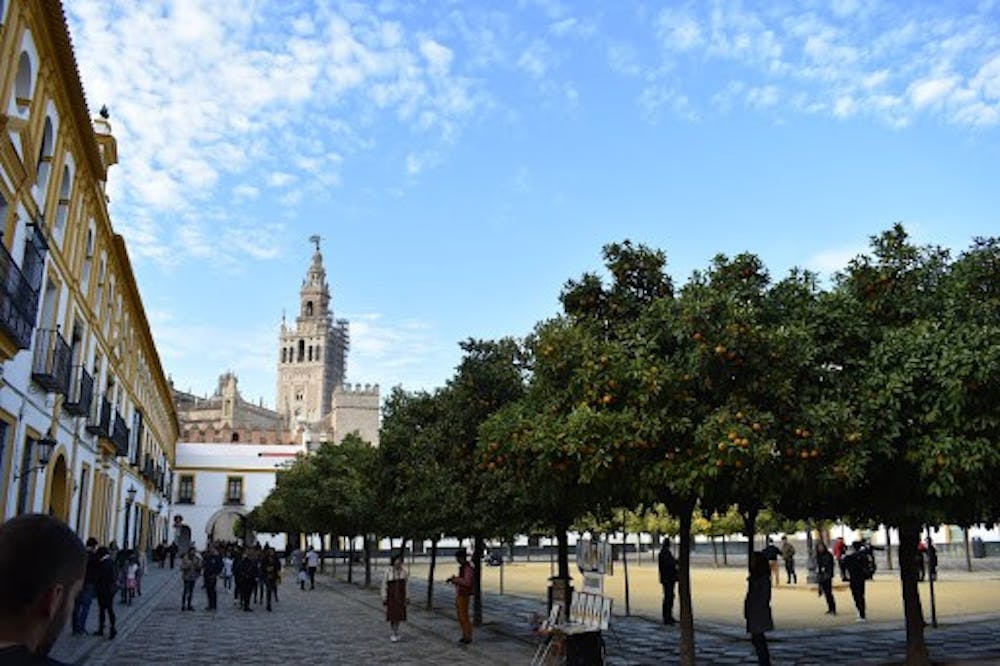Welcome to Seville, Spain. The capital of Andalusia, Seville represents all that southern Spain is known for, with its signature mix of Moorish and Roman influences, manifesting in the architecture, art, traditions and, of course, Flamenco.
Every Madrileño, or person from Madrid, who I had asked told me if I had truly wanted to get a feeling for Spain, I needed to see Seville. Home to the largest Gothic cathedral in the world, the intricate palace of the Reales Alcázares, numerous charming Flamenco barrios, its extravagant, city-wide Roman Catholic celebrations, the sweet perfume of orange blossoms on every corner, and more, Seville attracts tourists worldwide.
As a student studying abroad in Madrid for a semester, the tourist attractions certainly held appeal, but observing the way locals interacted and spent their days was equally, if not more, of interest to me. This is the Spain I read about in the classic Spanish novel "Don Quixote de la Mancha," or something closer to the idyllic southern countryside than Madrid, anyway.
Life moves a little slower in Seville. People are always outside enjoying each other’s company in the temperate weather, unless of course it’s siesta time. Family is immensely important. Food is not just fuel; it is an art and should be enjoyed that way. The city of Seville is full of incredible sights and experiences and, from a weekend trip, it seems to me that a life led there is just as wonderful.
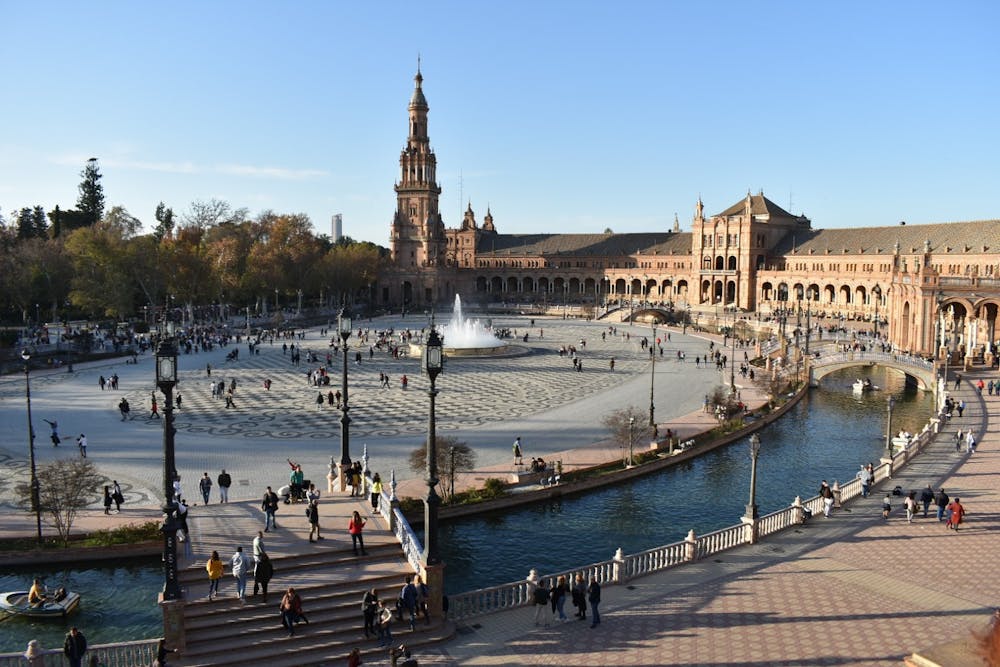
The Plaza de España combines a mix of architectural influences, including 1920s Art Deco, Spanish Renaissance Revival, Spanish Baroque Revival and Neo-Mudéjar styles.
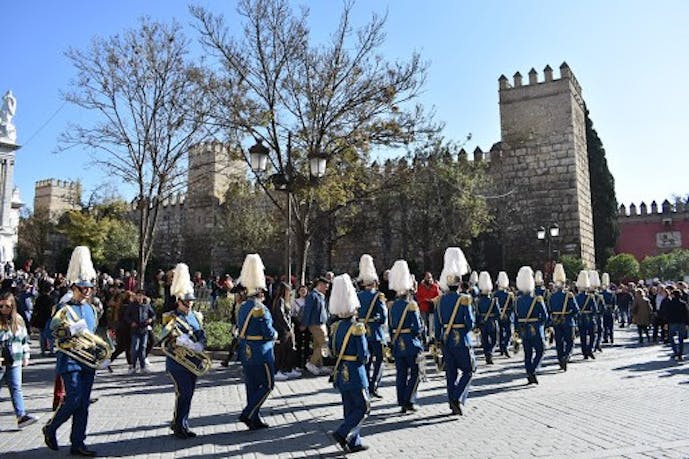
The palace guard marching by as I headed towards the massive line (visible in the background) to enter the palace of the Reales Alcázares.
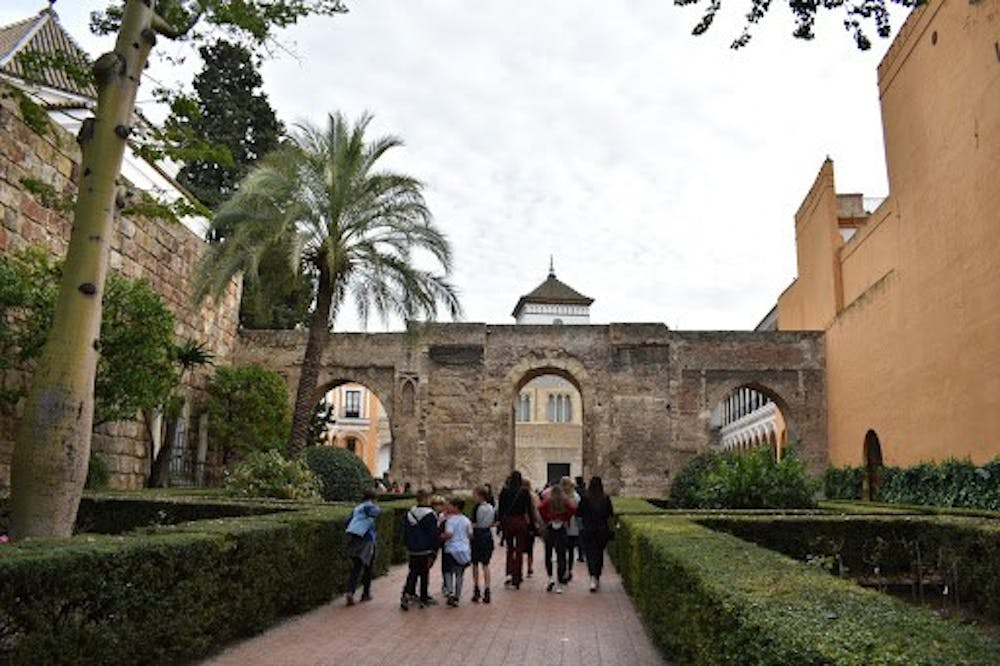
Walking down the entrance path of the palace of the Reales Alcázares.
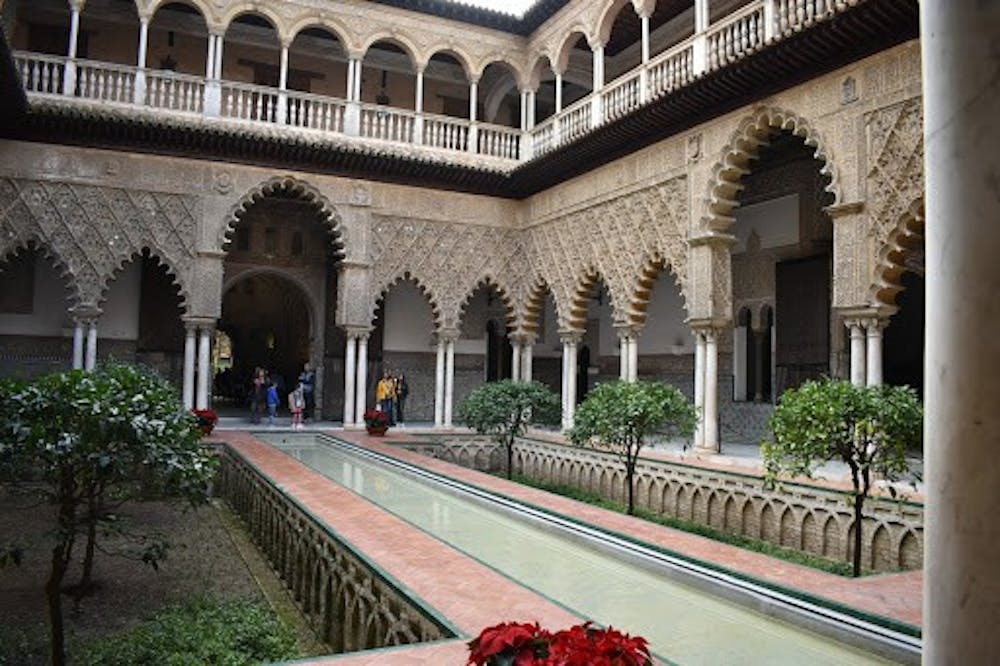
A view from the bottom floor of the Patio de las Doncellas. The name, the Courtyard of the Maidens in English, supposedly comes from the legend that the Moors, while in power, demanded 100 virgins every year from Christian kingdoms as tribute. This legend is also sometimes used as justification for the Christian conquest of Seville that was to come.
Enjoy what you're reading?
Signup for our newsletter
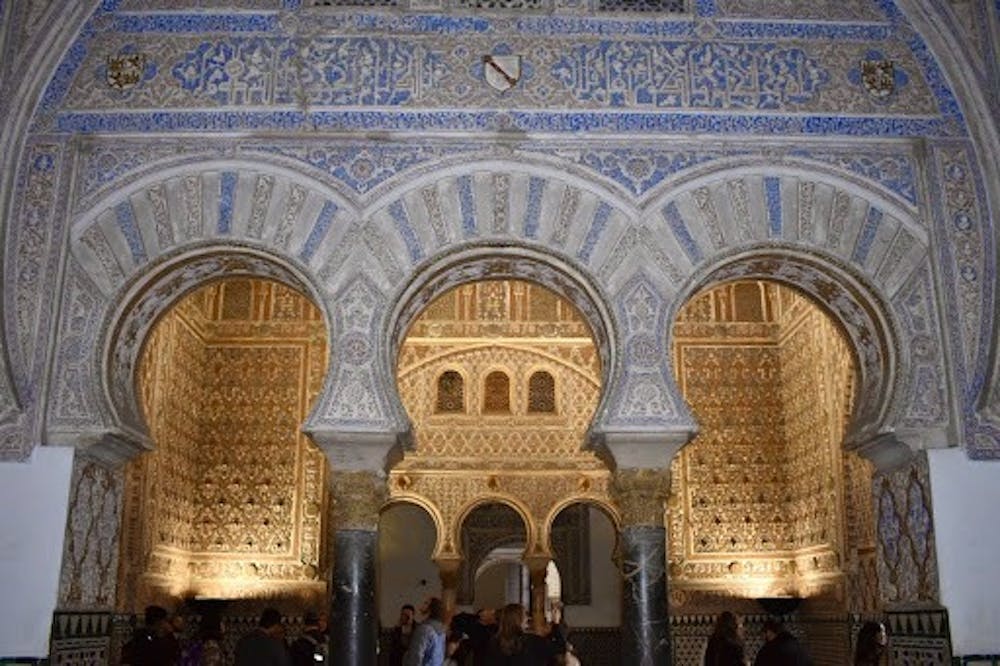
The Salon de Embajadores was an ancient throne room built during Moorish rule of Seville in the 11th century. In the 14th century, Pedro I of Castile remodeled the hall to make it a centerpiece of his royal palace. The most iconic change was the covering of the walls with tiled panels. Perhaps the most meaningful change was switching the orientation of the hall from facing Mecca to northeast.
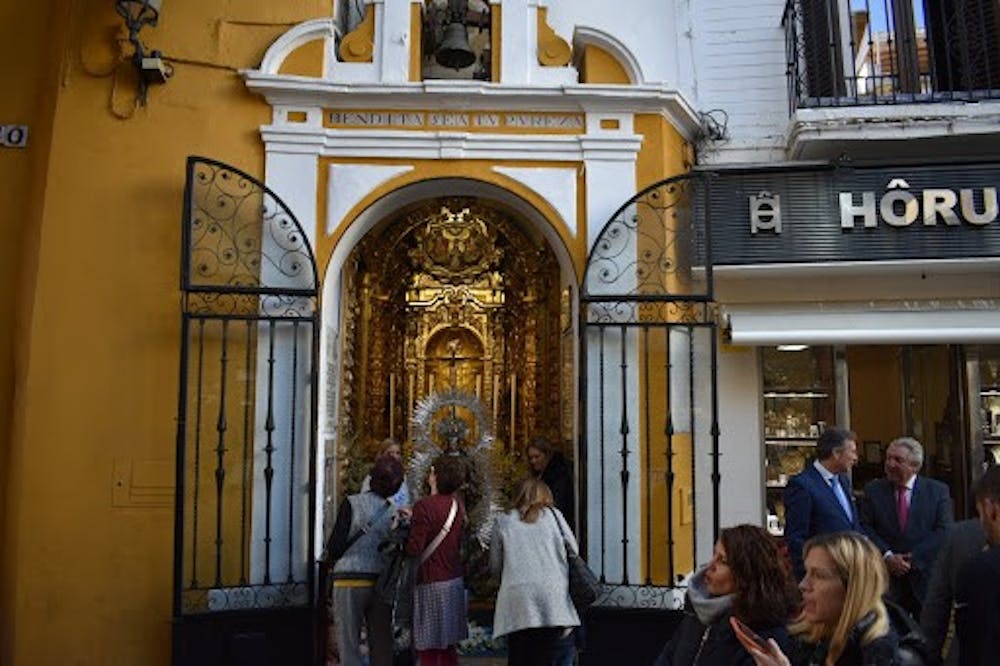
Tucked into the wall directly next to a grab-and-go cafe near the palace of Reales Alcázares, is a tiny, intricate Roman Catholic altar. The alter offers blessings to passerby. Earlier that day, the line extended around the corner.
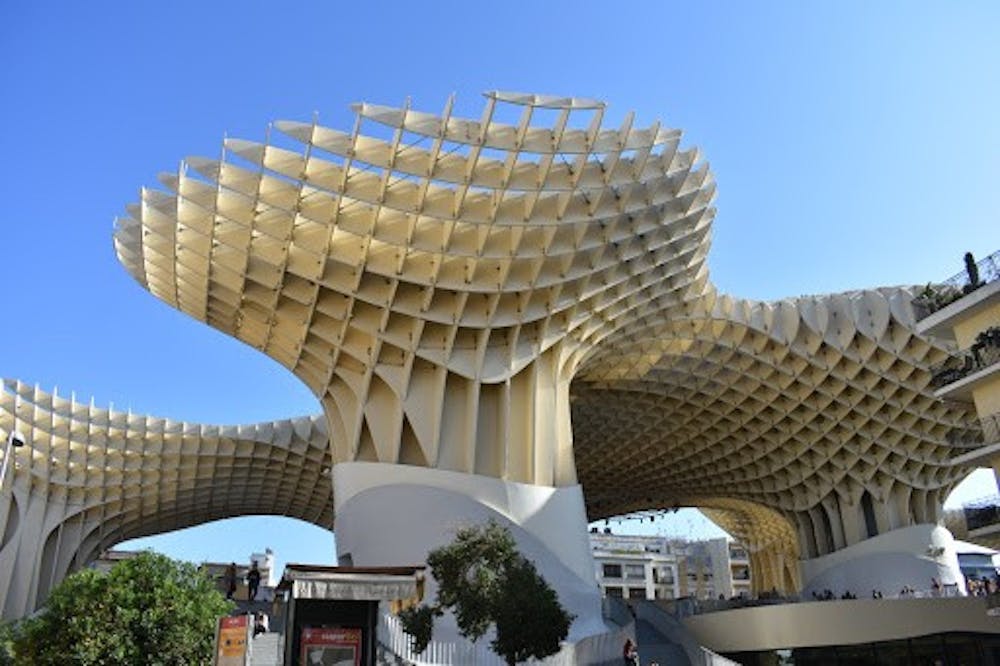
Metropol Parasol, popularly known as Las Setas de la Encarnación (Incarnation’s mushrooms), is a wooden structure located at La Encarnación square, in the old quarter of Seville. It was inspired by the vaults of the Catedral de Sevilla and the nearby ficus trees.
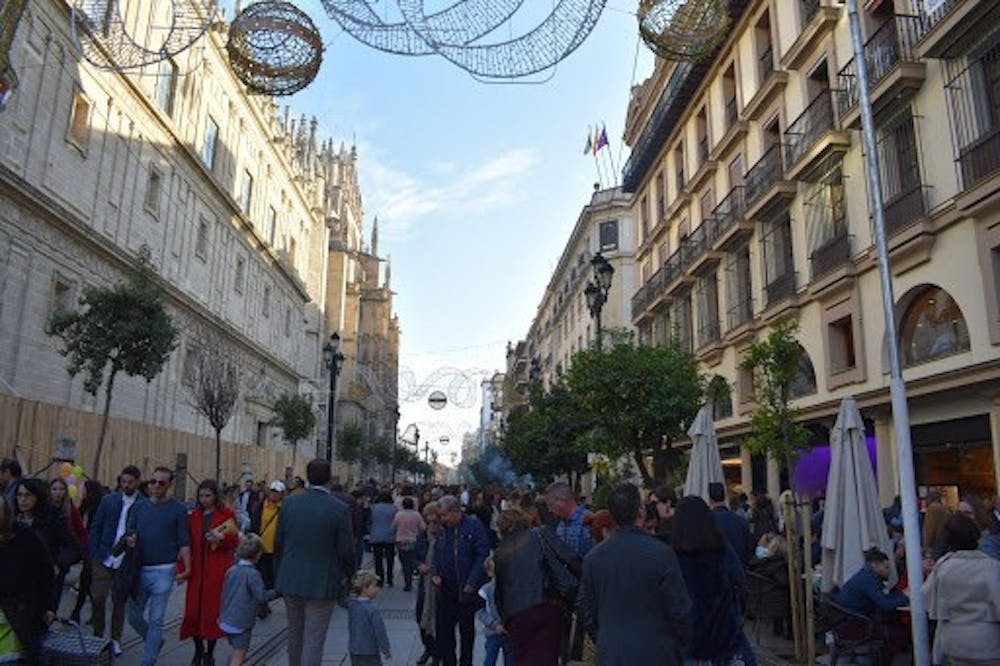
A street view of Seville, directly next to the Catedral de Sevilla on the left.

Although Seville is known for its unmatched Easter festivities, all of its Roman Catholic celebrations seem to be centrally located and extravagant. Here, there are masses of people gathered to watch a light show in honor of the Feast of the Immaculate Conception. Displayed on the towering angels pictured above, the show was nothing short of immaculate.
Contact features writer Grace Kiernan at grace.kiernan@richmond.edu.
Support independent student media
You can make a tax-deductible donation by clicking the button below, which takes you to our secure PayPal account. The page is set up to receive contributions in whatever amount you designate. We look forward to using the money we raise to further our mission of providing honest and accurate information to students, faculty, staff, alumni and others in the general public.
Donate Now
